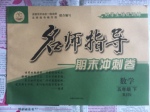题目内容
Anthony Horowitz was miserable as child. He was, as he put it, “not very bright” and couldn’t win the attention of his very wealthy parents, who preferred his “clever” older brother. At age 8, Horowitz was sent away to an abusive boarding school in his native England, even though he screamed and pleaded(恳求) with his parents year after year not to send him. “The thought was, It’ll be good for him,” he recalled.
It was not. Horowitz did badly in his studies, had few friends and was bullied (欺负) for five years. “My teachers couldn't have had a lower opinion of me,” he said. “I wasn't even smart enough to rebel . The one thing I remember from the very earliest age was this desire to write. When I was 10 years old, I remember asking my parents to get me a typewriter for my birthday because I wanted to be a writer.”
Now, at age of 55, Horowitz is one of the world's most successful children's book authors. His Alex Rider series has sold more than 5 million copies, and the eighth book featuring the young spy, Crocodile Tears, came out this month.
The Alex Rider books tell the adventures of 14-year-old Alex Rider, an agent for the British intelligence agency M16.
Horowitz said he doesn't try to write for kids; it just comes out that way. “I have a feeling it's to do with purity and simplicity. I give as little information as is necessary to describe the room, the character in the room, and get on with the action,” he said.
The style has also made Horowitz a successful writer of television shows for adults in Britain because, he says, writing books for kids is a lot like writing television for grown-ups: In both cases, it's all about entertaining people with a good story.
Now, Horowitz couldn't be happier with his life. He sums up his success: “…you can be anything you want to be if you just believe in yourself. I do believe it completely.”
1.In the boarding school, Horowitz’s teachers .
A.often criticized him B.showed great concern for him
C.taught him how to write stories D.thought little about his ability
2.Which of the following is true of Anthony Horowitz?
A.He was the beloved child of his family.
B.He benefited a lot from boarding school.
C.He emphasizes the plot rather than character in stories.
D.Although he is successful, he isn’t very happy.
3.What advice does Horowitz have for readers?
A.Confidence is the key to success. B.Hardship teaches valuable lessons.
C.Interest is the best teacher. D.Industry is the parent of success.
4.In which section can you most probably read the passage?
A.Campus Trends B.Culture & Leisure
C.Our World D.Science Life
1.D2.C3.A4.B
【解析】略

 名师指导期末冲刺卷系列答案
名师指导期末冲刺卷系列答案 开心蛙口算题卡系列答案
开心蛙口算题卡系列答案Writing being largely a self-taught occupation, texts on how to get about it -though great in number- seldom are of much use. .www.7caiedu.cn
You try, and fail. Then try again. Until at last, if you have some gift for it, the failures become less frequent, or at any rate less apparantly.
It is this ability to cover up one’s defects that is finally regarded as accomplishment or achievement.
Along the way there are the discouragements of unkind criticism, outright rejection, troublesome insecurity and irregular inability to meet debts.
It is uncommon, therefore, to come across a book containing advice of much practical value for anyone toying(漫不经心地考虑) with the dangerous idea of staring on a writing life.
A friend recently lent me such a book, however - one I wish I’d had the luck to read years ago, and which I would recommend to any young person devoted to making a career of words. It is the autobiography (自传) of the English novelist Anthony Trollope, first published in 1883, the year after his death.
Needing some means to support himself, Trollope at age 19 worked as a junior clerk in the British postal service. He was at his desk at 5:30 each morning to write for three hours. And he remained in the mail service 33 years, long after reputation and prosperity had come to him.
Now, what of his advice in his works?
1. For safety’s sake, arm yourself with some other skills, some other line of work to fall back on(求助)。 That way, failure at writing, though the disappointment may appear, will not mean ruin.
2. Do not depend too much on inspiration. Writing is a craft, which Trollope compared to the craft of shoemaking. The shoemaker who has just turned out one pair of his work sets to work immediately on the next pair.
3. Have a story to tell, but, more important than that, people with characters who will speak and move as living creatures in the reader’s mind. Without memorable characters, story alone is nothing.
4. Meet your deadlines. Life is endlessly “painful and troublesome” for writers who can’t finish their work on time.
5. Do not be carried away by praise. And, above all, do not be injured by criticism.
6. Understand the risks of writing for a living. “The career, when successful, is pleasant enough certainly; but when unsuccessful, it is of all careers the most painful.”
1.This passage mainly discusses__________.
|
A.the difficulties and risks of making a career of words |
|
B.the uselessness of instructions contained in writing guidebooks |
|
C.the autobiography of the 19th century English novelist Anthony Trollope |
|
D.sound advice provided in Anthony. Trollope’s autobiography |
2. From the context we can figure out that the underlined word “defect” in Paragraph 3 means__.
|
A.advantage |
B.fault |
C.truth |
D.disadvantage |
3.According to the author, writing _______.
|
A.is basically a self-taught occupation and no instructions on how to deal with it are of any practical use |
|
B.is a “trial and error” process and it does not count whether you have the gift for writing or not |
|
C.for a living is the most pleasant of all careers, full of praise and enjoyment |
|
D.sometimes provides good hopes of winning public praise and escaping povert |
4.From the passage we may infer that the author is most probably
|
A.an instructor of writing |
B.a writer |
|
C.an educator |
D.a publisher |